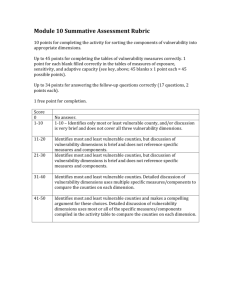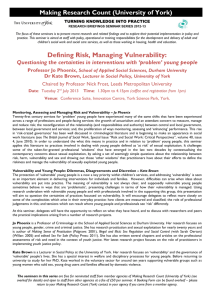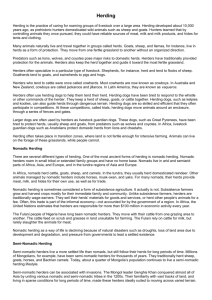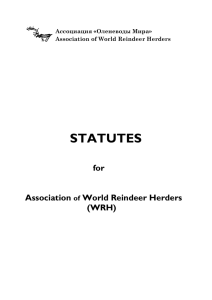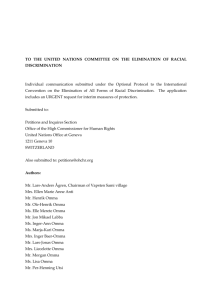Examples of applicability
advertisement
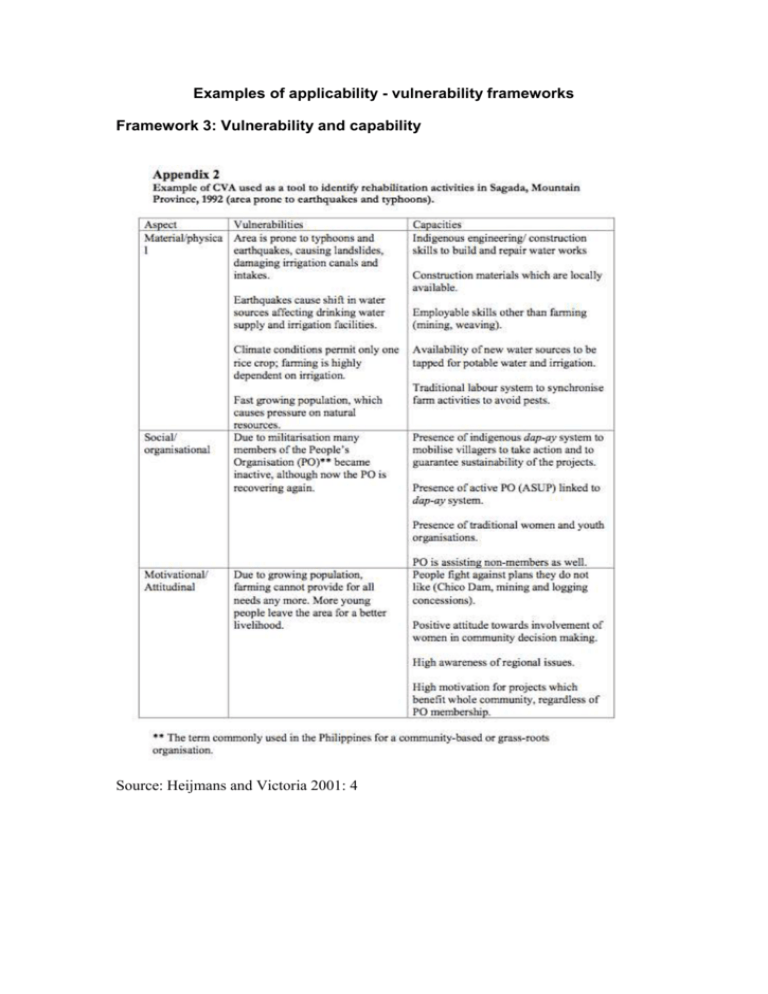
Examples of applicability - vulnerability frameworks Framework 3: Vulnerability and capability Source: Heijmans and Victoria 2001: 4 Framework 4: Three dimensions of vulnerability Each of the three points of the triangle has important complementarities and areas of overlap with the other two. The tripartite causal structure in the case of floods comprises owner- ship of land, the main source of livelihood (entitlement); state and civil society relations seen in political and institutional terms (enfranchisement/ empowerment); and the structural-historical form of class and gender relations within a specific political economy. The space of vulnerability has an internal structure, and it is therefore possible to locate vulnerable groups and regions within it. Source: Mustafa, D. 1994 Structural causes of vulnerability to flood hazard in Pakistan Framework 5: Progression of Vulnerability Source: Mustafa, D. 1994 Structural causes of vulnerability to flood hazard in Pakistan Framework 6: Coupled human-environment system for vulnerability Vulnerability framework. Source: Turner et al 2003 Comprehensive vulnerability analysis ideally considers the totality of the system. This ideal, however, is unrealistic. Realworld data and other constraints invariably necessitate a ‘‘reduced’’ vulnerability assessment. Nevertheless, analysts must remain aware that vulnerability rests in a multifaceted coupled system with connections operating at different spatiotemporal scales and commonly involving stochastic and nonlinear processes. Failure to consider this larger context could lead to the identification of ‘‘response opportunities,’’ which, if implemented, lead to significant unintended consequences or ‘‘surprise’’. The vulnerability framework presented here is guided by the need to provide a template suitable for ‘‘reduced-form’’ analysis yet inclusive of the larger systemic character of the problem. The framework is not explanatory but provides the broad classes of components and linkages that comprise a coupled system’s vulnerability to hazards. The basic architecture (Fig. above) consists of: (i) linkages to the broader human and biophysical (environmental) conditions and processes operating on the coupled system in question; (ii) perturbations and stressors-stress that emerge from these conditions and processes; and (iii) the coupled human–environment system of concern in which vulnerability resides, including exposure and responses (i.e., coping, impacts, adjustments, and adaptations). These elements are interactive and scale dependent, such that analysis is affected by the way in which the coupled system is conceptualized and bounded for study. The full framework is illustrated in Fig. above by way of spatial scale, linking place (blue) to region (yellow) to globe (green), and various parts are elaborated in Fig. below. The coupled human–environment system, whatever its spatial dimensions, constitutes the place of analysis. The hazards acting on the system arise from influences outside and inside the system and place but, given their complexity and possible nonlinearity, their precise character is commonly specific to the place-based system. For these reasons, the hazards themselves are located both within and beyond the place of assessment. These hazards hold the potential to affect the coupled system, including the ways in which the system experiences perturbations and stressors. Details of the exposure, sensitivity, and resilience components of the vulnerability framework. Case Study: Modifying the general vulnerability framework This vulnerability study evaluated the general methodological framework and modified it, where necessary, to suit the characteristics of the system of interest, in this case reindeer herding in Finnmark. A conceptual framework was developed that focuses on the specific and, perhaps, even unique attributes of each particular case. Reindeer, reindeer herders, and the natural and social environments to which they belong represent a coupled human– environment system. Many of the components of this system, though only distantly related, are closely and functionally linked. Herders’ livelihoods, for example, depend on the level of production of their herds. Production, in turn, depends on the size of herds and on the productivity of individual reindeer in them, which depend, again in turn, on the quantity and quality of forage available. The level of feeding the animals enjoy is determined in the short term by prevailing weather conditions including temperature in summer, which affects the growth and nutritional quality of forage plants, and by weather conditions in winter, in particular a combination of precipitation, temperature, and wind, which affect the quality of the snow pack and, hence, the availability of the forage beneath. In the medium and long term, however, feeding levels are also determined by a suite of nonclimate factors all of which have a major influence on the level of production and, completing the circle, on the profitability of reindeer herding. These include the quality of pasture (in terms of the species composition and biomass of forage and the availability of other important natural resources), the area of pasture available, herders’ rights of access to pasture, the level of competition between reindeer and other grazers, the level of predation to which herds are subjected, the monetary value of reindeer products and so on. Common to all these non-climate factors is that they are influenced by the decisions and policies of institutions far removed from Finnmark. Hence, it was clear at the outset that reindeer herding is a production system affected not just by climate variability, and potentially also by climate change, but also potentially very strongly by the socio-economic environment in which it exists. Conceptual vulnerability framework for the Finnmark case study. A conceptual model relevant for reindeer herding in Finnmark was developed at a five-day meeting held in Tromsø in August 2002. The president of the Association of World Reindeer Herders drew together a team of natural scientists, social scientists, administrators, and reindeer herders. All the participants were encouraged to emphasize their own particular perspectives and, working together in this way, the group then revised the generalized conceptual framework to suit the conditions prevailing in Finnmark. The herders, for example, were largely responsible for selecting the principal components included in the final model and upon which the study was based. The customized framework above describes the perceived relationships through which (1) climate change influences the growth and productivity of herds of reindeer, (2) herders cope with climateinduced changes in the supply of forage and in the level of production of their herds, and (3) herders’ ability to cope with climate-induced changes is constrained by extrinsic anthropogenic factors collectively called “institutions and governance”. (These include “predation”, the level of which is influenced by legislation that protects populations of predators.) Each part was tempered with herders’ understanding of the dynamics of herding, of their society, and of the natural and social environments in which they live. Superficially the final model bore little resemblance to the general framework from which it evolved, yet key elements, including human and environmental driving forces, human and societal conditions, impacts, responses, and adaptation, all remain.






